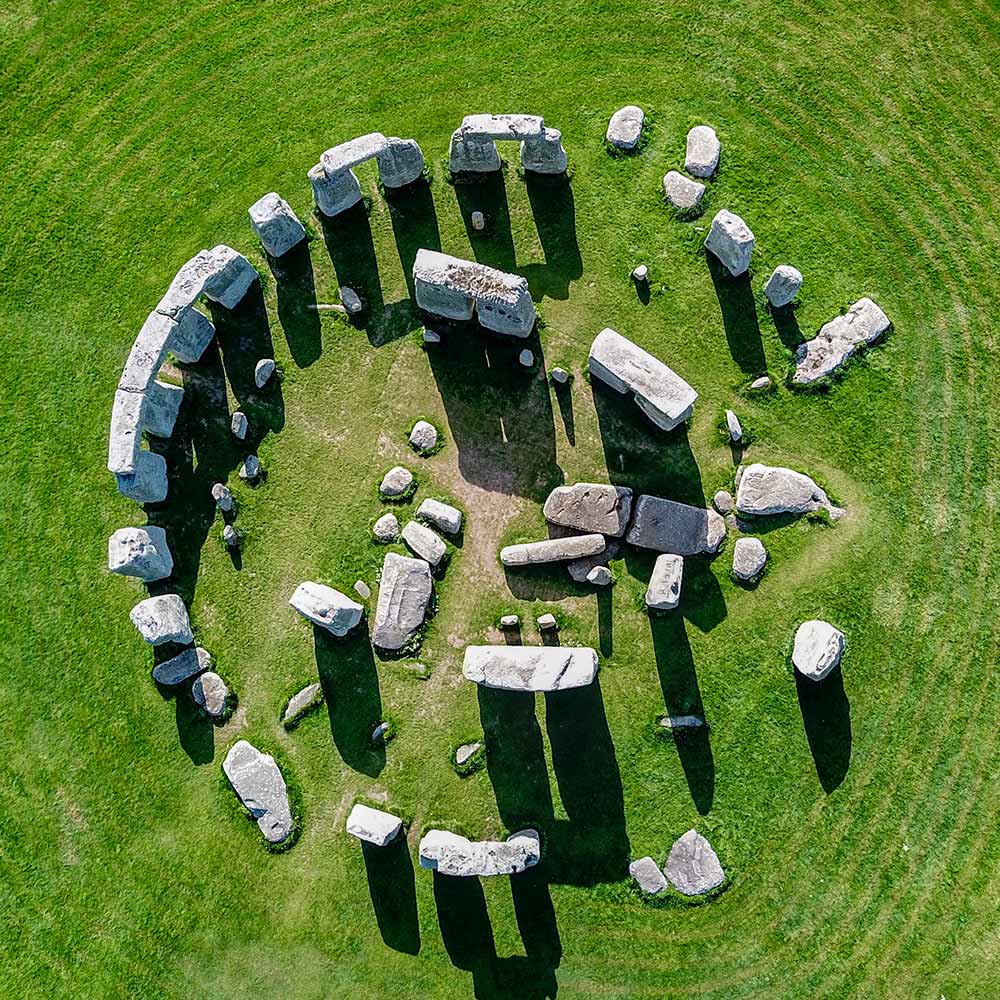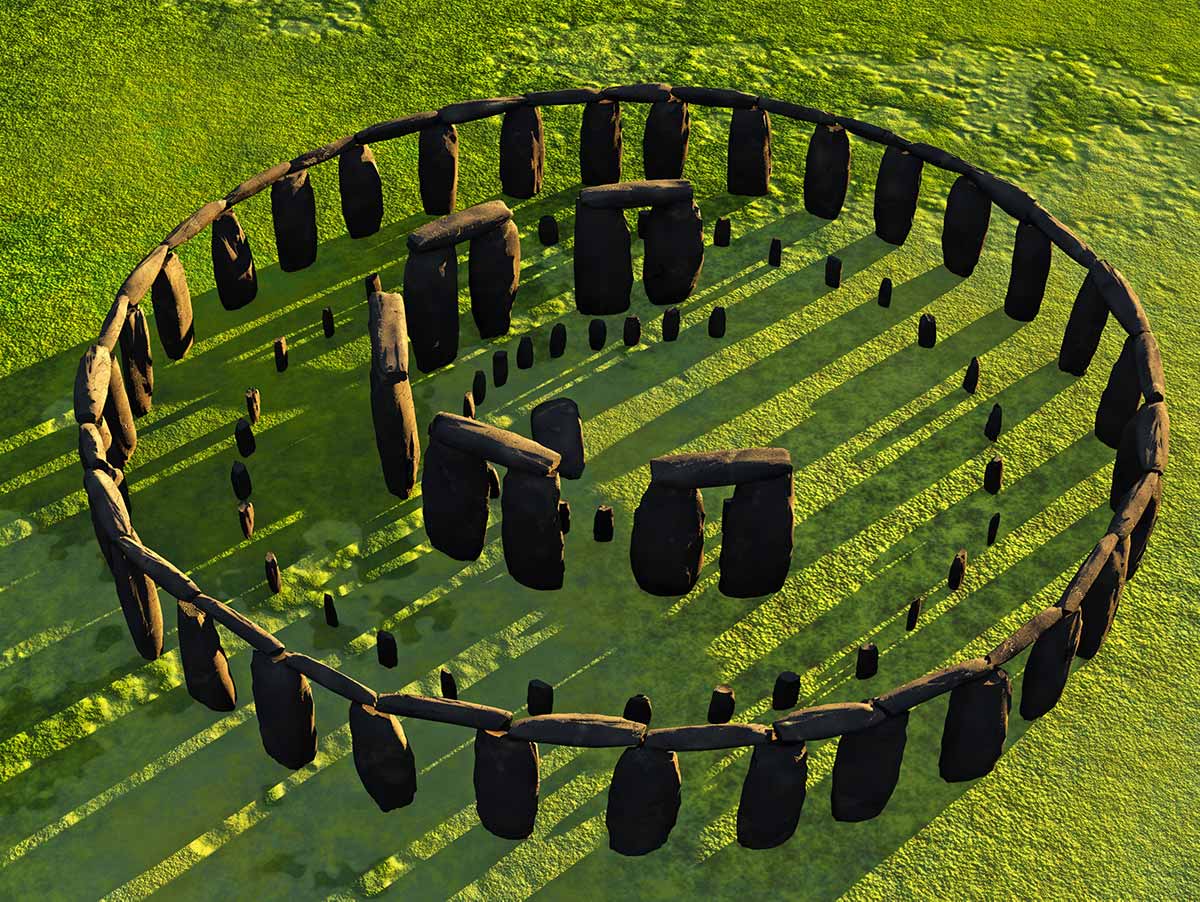Sign In
Quadrilaterals Inscribed in a Circle







| | 9 Theory slides |
| | 8 Exercises - Grade E - A |
| | Each lesson is meant to take 1-2 classroom sessions |
Catch-Up and Review
Here are a few recommended readings before getting started with this lesson.
Try your knowledge on these topics.




Investigating Quadrilaterals Inscribed in a Circle
Inscribed Quadrilateral Theorem

Inscribed Quadrilateral Theorem
A quadrilateral can be inscribed in a circle if and only if its opposite angles are supplementary.

Based on the diagram above, the following relations hold true.
m∠ A + m∠ C = 180^(∘)
m∠ B + m∠ D = 180^(∘)
Proof
This theorem will be proven in two parts.
- If a quadrilateral can be inscribed in a circle, then its opposite angles are supplementary.
- If the opposite angles of a quadrilateral are supplementary, then it can be inscribed in a circle.
Part 1
Consider a circle and an inscribed quadrilateral ABCD.

Notice that BCD and BAD together span the entire circle. Therefore, by the Arc Addition Postulate, the sum of their measures is 360^(∘). mBCD+mBAD=360^(∘) From the diagram, it can be seen that BCD and BAD are intercepted by ∠ A and ∠ C, respectively.

mBCD= 2m∠ A, mBAD= 2m∠ C
Factor out 2
.LHS /2.=.RHS /2.
Part 2
This part of the proof will be proven by contradiction. Suppose that ABCD is a quadrilateral that has supplementary opposite angles, but ABCD is not cyclic.

Since ABCD is not cyclic, the circle that passes through A, B, and C, does not pass through D. Let E be the point of intersection of AD and the circle. Consider the quadrilateral ABCE.

Because ABCE is inscribed in a circle, it can be concluded that the opposite angles ∠ AEC and ∠ B are supplementary. m∠ AEC+m∠ B=180^(∘) It was assumed that ABCD has supplementary opposite angles. Therefore, ∠ D and ∠ B are supplementary angles. m∠ D+m∠ B=180^(∘) By the Transitive Property of Equality, the above equations imply that ∠ AEC and ∠ D have equal measures. lm∠ AEC+ m∠ B=180^(∘) m∠ D+ m∠ B=180^(∘) ⇓ m∠ AEC=m∠ D However, this is not possible. The reason is that the measure of the exterior angle ∠ AEC of △ EDC can not be the same as the measure of the interior angle ∠ D.

This contradiction proves that the initial assumption was false, and ABCD is a cyclic quadrilateral. Note that a similar argument can be used if D lies inside the circle. The proof of Part 2 is now complete.
Using the Inscribed Quadrilateral Theorem
The Inscribed Quadrilateral Theorem can be used to identify whether a quadrilateral is cyclic.
Tiffaniqua is given a quadrilateral JKLM. She wants to draw a circle that passes through all the vertices, but she does not know if it is possible. For that reason, she decided to measure the angles of JKLM.

Hint
Compare the sums of the opposite angles' measures.
Solution
The Inscribed Quadrilateral Theorem can be used to determine whether JKLM is cyclic. According this theorem, the opposite angles of the quadrilateral need to be supplementary. Calculate the sum of opposite angles' measures and see if it is true.
| Pair 1 | Pair 2 | |
|---|---|---|
| Opposite Angles | ∠ J and ∠ L | ∠ K and ∠ M |
| Sum | 99^(∘)+74^(∘)=173^(∘) * | 105^(∘)+82^(∘)=187^(∘) * |
The sum of the angle measures in each pair is not equal to 180^(∘). Therefore, neither ∠ J and ∠ L nor ∠ K and ∠ M are supplementary. This finding implies that JKLM is not a cyclic quadrilateral.

Practice Using the Inscribed Quadrilateral Theorem
Find the measure of ∠ D. Write your answer without the degree symbol.

Cyclic Quadrilateral Exterior Angle Theorem
On the diagram below, one side of a cyclic quadrilateral ABCD is extended to E. As a result, ∠ ADE — the exterior angle of ABCD — is formed.

In this case, ∠ ABC is said to be the opposite interior angle. The relationship between these angles is described by the Cyclic Quadrilateral Exterior Angle Theorem.
Cyclic Quadrilateral Exterior Angle Theorem
If a side of a cyclic quadrilateral is extended, then the exterior angle is congruent to the opposite interior angle.

Based on the diagram above, the following relation holds true.
∠ ABC ≅ ∠ ADE
Proof
Consider an inscribed quadrilateral with one side extended to point E.

From the diagram, it can be observed that ∠ ADE and ADC form a linear pair. Therefore, these angles are supplementary, which means that the sum of their measures is 180^(∘). m∠ ADE+ m∠ ADC=180^(∘) Also, by the Inscribed Quadrilateral Theorem, the opposite angles ∠ ABC and ∠ ADC are also supplementary.

Therefore, the following relation is true. m∠ ABC+ m∠ ADC=180^(∘) After analyzing the equations, ∠ ABC and ∠ ADE show to be supplementary to the same angle ∠ ADC. Therefore, by the Congruent Supplements Theorem, they are congruent.
∠ ABC ≅ ∠ ADE
This relation is illustrated on the diagram below.

By the same logic, this theorem can be proven for any other extended side of ABCD. The proof is now complete.
Using the Cyclic Quadrilateral Exterior Angle Theorem
Davontay wants to go to a concert, but his parents say that he has to finish his homework first. In the last math exercise, he is asked to find the values of all variables.

Help Davontay solve the last exercise so that he can go to the concert.
Hint
Identify the exterior angles to the inscribed quadrilateral WXYZ and the opposite interior angles. Then use the property that states these angles are congruent.
Solution
m∠ VXY= 84^(∘), m∠ YXW= a^(∘)
LHS-84^(∘)=RHS-84^(∘)

m∠ VXY= 84^(∘), m∠ WZY= 3b^(∘)
.LHS /3.=.RHS /3.
Rearrange equation

m∠ YZU= 2c^(∘), m∠ WXY= 96^(∘)
.LHS /2.=.RHS /2.
Properties of Inscribed Quadrilaterals in a Circle

Inscribed Quadrilaterals and Polygons in Real Life
It is worth mentioning that not only quadrilaterals can be inscribed in a circle. There can also be inscribed polygons with a different number of sides. Stonehenge is a real-world example of an inscribed polygon. Unfortunately, only some parts of it remain to this day.
However, when Stonehenge was built by ancient peoples about 5000 years ago, it had a cyclic polygon structure, as illustrated on the diagram below.
To sum up, inscribed quadrilaterals and polygons are not only interesting geometric objects — they can be seen and applied in real life.
What are the values of x and y?

Notice that the quadrilateral ABCD is inscribed in a circle. By the Inscribed Quadrilateral Theorem, opposite angles, ∠ A and ∠ C as well as ∠ B and ∠ D, are supplementary.
This means that the sum of the angle measures equals 180^(∘). With this information, we can write two equations. 26y+ 2x=180^(∘) 3x+ 21y=180^(∘) By combining these equations, we get a system of equations which we can solve using the Method of Substitution.
Having solved for y, we can substitute this into the first equation and solve for x.
Consider the inscribed quadrilateral.

Examining the diagram, we notice that ∠ K is the inscribed angle to the intercepted arc JML.
By the Inscribed Angle Theorem, we know that ∠ K is half the measure of JML. m∠ K = 1/2 mJML By substituting the measure of JML in this formula, we can determine the measure of ∠ K.
Let's add the measure of ∠ K to the diagram.
Notice that JKLM is an inscribed quadrilateral. According to the Inscribed Quadrilateral Theorem, opposite angles are supplementary. This means we can write the following equation. 4b+92^(∘)=180^(∘) Let's solve this equation for b.
What is the measure of ∠ ABC?

To solve this exercise, we will add a third radius OD to the circle. All segments that marks a radius of the circle are congruent. OA≅ OD≅ OC Let's also add this information to the diagram.
A central angle always has the same measure as its intercepted arc. Notice that △ AOD and △ DOC by the Side-Side-Side Congruence Theorem are congruent triangles. Therefore, we know that m∠ AOD also equals 110^(∘).
Also since △ ADO and △ DOC both are isosceles triangles, by the Base Angles Theorem we know that the base angles are congruent.
Using the Interior Angles Theorem, we can determine the measure of the base angles for these triangles.
The measure of the base angles is 35^(∘). This means m∠ ADC, which is the sum of the measures of two base angles, must be 70^(∘).
Notice that the quadrilateral ABCD is inscribed in the circle. Therefore, we can use the Inscribed Quadrilateral Theorem to determine the measure of ∠ ABC, as it is the opposite angle to ∠ ADC.


